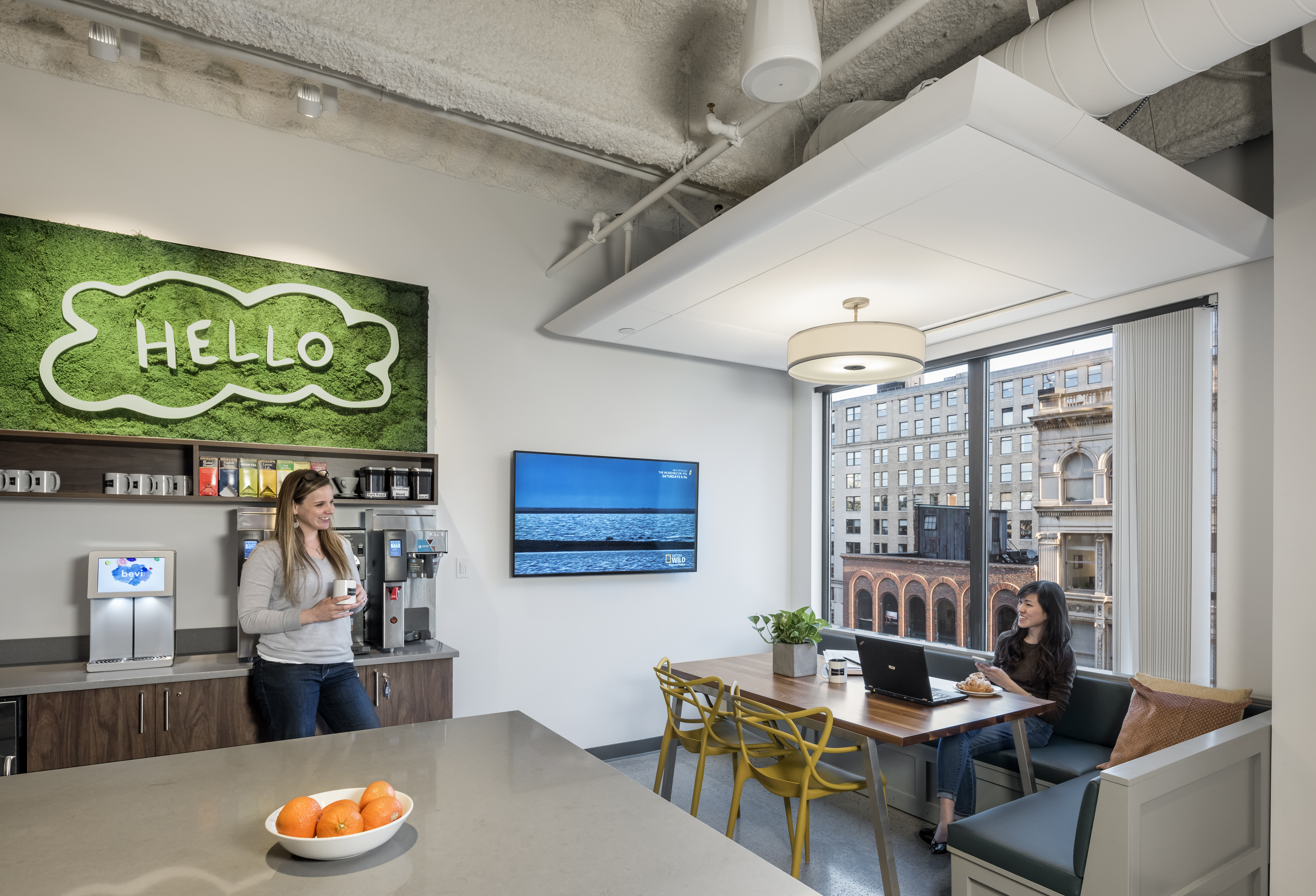In this day and age, most companies know that in order to increase employee retention and productivity levels, they need to provide a workspace and culture that promotes health and wellness. Having said that, many companies are still facing challenges to implement these practices in a sustainable, cost-efficient manner. Practicing wellness in the workspace goes further than providing a discounted gym membership or fruit in the break room – in order to be implemented, a well-thought and sustainable strategy is required.
At Workbar, we are on a mission to help our members learn these practices and assure that work and wellness go hand in hand. Our team believes that in order to be functional and productive, our members’ health and wellness should be optimized at work. That’s why our coworking spaces have been meticulously designed to support health and well-being. By implementing elements like dimming light systems, high-quality water, whole food snacks, and reducing indoor air pollution, we are striving to send the message that productivity and wellness can and should complement each other. Taking it a step further in our mission to optimize the workplace, we had our modern Back Bay location certified under the WELL Building Standard, a global movement that uses design to improve health and human experience. Currently, Workbar Back Bay is only coworking space in the world to hold the certification.
From special dimming lights that adjust as the day goes by to air quality levels and healthy snacks, our office was built to ensure maximum wellbeing for its occupants.
Research has shown that air quality and lighting at work can have significant effects on brain function and productivity. Poor lighting can cause headaches, eye strain, and tiredness which can all contribute to stress, and thereby anxiety and depression.
In fact, a study with 444 employees from United States and India via an online panel showed that natural elements and sunlight exposure related positively to job satisfaction as well as organizational commitment, and negatively to depressed mood and anxiety. Direct sunlight was a dominant predictor of anxiety; indirect sunlight was a dominant predictor of depressed mood, job satisfaction, and organizational commitment.
As someone who has worked at a large number of offices during my career, it is not hard to note the big differences between old-school, traditional offices and a workspace optimized for health and wellbeing. When spending the day at Workbar Back Bay, I find that I’m not only more productive, but often feel happier and more motivated. The clarity, the high air quality (which can be a challenge to maintain at a large occupied space), the ergonomic furniture arrangements, it really makes all the difference.
When considering wellness in the workspace, it is also very important to talk about mental health and about ways employers can support and promote it. If your state of mind is suffering, it is very hard to benefit from any of the physical wellness elements in an office. Some practices we have implemented to support mental health in the workplace include mid-day meditation sessions, group yoga classes, scheduled work breaks highlighting brain-relief activities such as coloring, journaling, puzzles, board games and more.
Also, we find that for professionals who run their own business and often work alone, simply being at a space with other people helps their mental health state. We as humans crave social interactions and an important aspect of coworking is facilitating that. Through events and happenings, we are always working to strengthen the sense of community our members get. Sharing a cup of tea or coffee in the morning, having someone to discuss last night’s game with or even just seeing other professionals work in the same room can go a long way when fighting isolation and maintaining a stable mental state.
As publisher Arianna Huffington said, “Corporate America is shifting. There are, as always, companies that are ahead of the curve, but everybody’s recognizing that if you don’t take care of the well-being of your employees it’s going to affect the bottom line.”
Wellness in the workspace is more than a passing HR trend, it is a progressive movement to support workers across industries, and while it requires planning and commitment from employers, the benefits of implementing it are clear. As the movement grows globally, and as we all strive to build more human-centric offices that support health, both companies and professionals adopting this trend will only see their work environment improved. And maybe in the years to come offering a wellness-focused office won’t be a startup perk but a standard practice.


